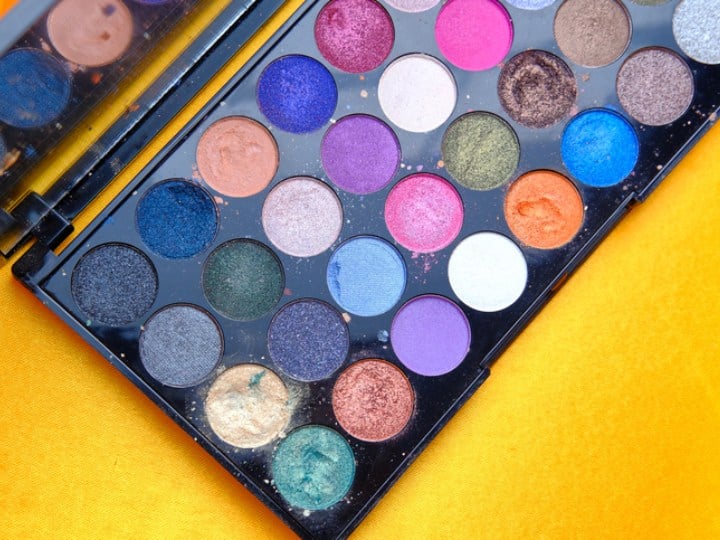Cosmetic safety testing for prohibited or restricted substances in cosmetic products supporting regulatory compliance and cosmetic safety.
A key concern of cosmetics safety testing is the control of prohibited or restricted substances in cosmetic products, which is critical for manufacturers, distributors, and importers of personal care and beauty products. Current regulations in the region relevant to your product market launch must be met and this demands the need for accurate and sensitive analytical determination of prohibited or restricted substances. The EU Cosmetics Regulation (EC) No 1223/2009 includes two crucial appendices that govern the safety and compliance of cosmetic products: Appendix II and Appendix III. Appendix II, contains a comprehensive list of substances that are entirely banned ingredients in cosmetics in Europe due to their hazardous nature. Compliance with Appendix II is mandatory to ensure that cosmetics on the market do not contain any of these dangerous substances. Appendix III, or the "List of Substances Which Cosmetic Products Must Not Contain Except Subject to the Restrictions Laid Down," outlines substances that are permitted in cosmetic products but with strict limitations on their concentration and usage conditions. These substances may pose risks at higher levels, so their inclusion in cosmetics is closely monitored and regulated. Commonly restricted substances include certain preservatives, colorants, and UV filters. Ensuring compliance with Appendix III involves precise analytical testing to verify that the concentration of these substances does not exceed the specified limits and that their use adheres to the conditions set out in the regulation.
With each revision of the EU Cosmetics Regulation, it is crucial for manufacturers to ensure their products remain compliant through rigorous analytical testing. Regulatory updates often introduce new substances to the prohibited and restricted lists based on emerging scientific evidence and safety assessments. These revisions are essential for protecting consumer health and adapting to new findings about the potential risks associated with certain ingredients. Analytical testing allows manufacturers to accurately determine the presence and concentration of substances in their products, ensuring they meet the latest regulatory standards. Failure to comply with these updated regulations can lead to product recalls, legal penalties, and damage to brand reputation, making ongoing testing a vital component of quality assurance and regulatory compliance in the cosmetics industry.
Cosmetic safety testing for prohibited or restricted substances
Our cosmetic testing experts provide cost-effective programs following official methods to meet your specific product needs. Services include routine screening and quantification of substances on the prohibited substances list. Our scientists are experienced in applying established industry methodology and also in method development and validation using a wide scope of analytical technologies.
Bisphenols Detection and Quantification
Bisphenols, including Bisphenol A (BPA), Bisphenol S (BPS), and a range of structural analogues (BPX), are increasingly under regulatory scrutiny due to their potential endocrine-disrupting properties. These substances may be present in cosmetic products through raw materials or migration from packaging. Our laboratories offer advanced analytical testing for a panel of 15 Bisphenols using high-sensitivity Liquid Chromatography coupled with Tandem Mass Spectrometry (LC-MS/MS). Our recently enhanced method delivers improved limits of detection enabling accurate trace-level identification. This testing supports regulatory compliance and risk assessment, particularly in light of evolving safety evaluations and global restrictions on endocrine disruptors.
Free Formaldehyde Quantification
Whilst formaldehyde is prohibited, preservatives listed in Annex V called ’’formaldehyde releasers’’ are still allowed in cosmetic products as long as the formaldehyde concentration in the finished product does not exceed 0.05%. We provide accurate and robust formaldehyde analytical testing to ensure the safety of your innovative beauty products using High-performance liquid chromatography (HPLC) methodology with post-column derivatization.
Heavy Metals Determination
Annex II of Regulation (EC) 1223 / 2009 prohibits the use of heavy metals and heavy metals compounds containing lead, cadmium, arsenic, antimony and mercury except for some mercury compounds are permitted to be used as preservatives. We provide rapid and accurate testing using Inductively Coupled Plasma - Optical Emission Spectroscopy (ICP-OES) or Inductively Coupled Plasma - Mass Spectrometry (ICP-MS) to meet your heavy metals analysis requirements.
Fragrance Allergens
Labelling the presence of fragrance allergens in cosmetic products is a legal requirement; specifically 0.001% for leave-on products and 0.01% for rinse-off products. Our team have developed a 57 allergen screening method using an advanced gas chromatography method for sensitive and specific allergen identification and quantification.
Phthalates in Raw Materials or Products
Phthalate trace level detection analysis, conducted by our analytical teams can screen for the presence of phthalates and also determine the levels of a range of phthalates in your cosmetic products or raw materials.
PFAS Analysis for Cosmetics
We use advanced analytical techniques such as Liquid Chromatography with Tandem Mass Spectrometry (LC-MS/MS) to accurately detect a selection of PFAS in cosmetics at very low concentrations. As regulations surrounding PFAS continue to evolve, our team is committed to ensuring compliance and providing reliable data to help you make informed decisions about product safety.
Parabens and Phenoxyethanol
Parabens and Phenoxyethanol are well known and accepted preservatives in cosmetics and have been in use for over 50 years. Use of these substances is approved and controlled by the EU Regulation. Approved Methodology: HPLC
1,4-Dioxane Quantification
Although its use is banned, 1,4-Dioxane can be generated during the manufacture of ethoxylated surfactants, e.g. Sodium laureth sulfate, or sodium lauryl ether sulfate (SLES), commonly found in shampoos, deodorants, toothpastes and bath products. To help you meet regulatory compliance requirements our experts provide Headspace Gas Chromatography-Mass Spectrometry (GC-MS) in raw materials and formulated products.
Nanoparticles in Cosmetics
We provide rigorous testing to help cosmetic manufacturers and importers demonstrate understanding of nanotechnology in their products through advanced analytical services.
Bringing Quality and Safety to Life
Our cosmetic testing experts provide cost-effective and robust analytical services to help you understand precisely the presence and levels of restricted or prohibited substances in your products. Alongside our laboratory testing solutions we provide complete stewardship through safety and toxicological assessment consultancy and reporting.
